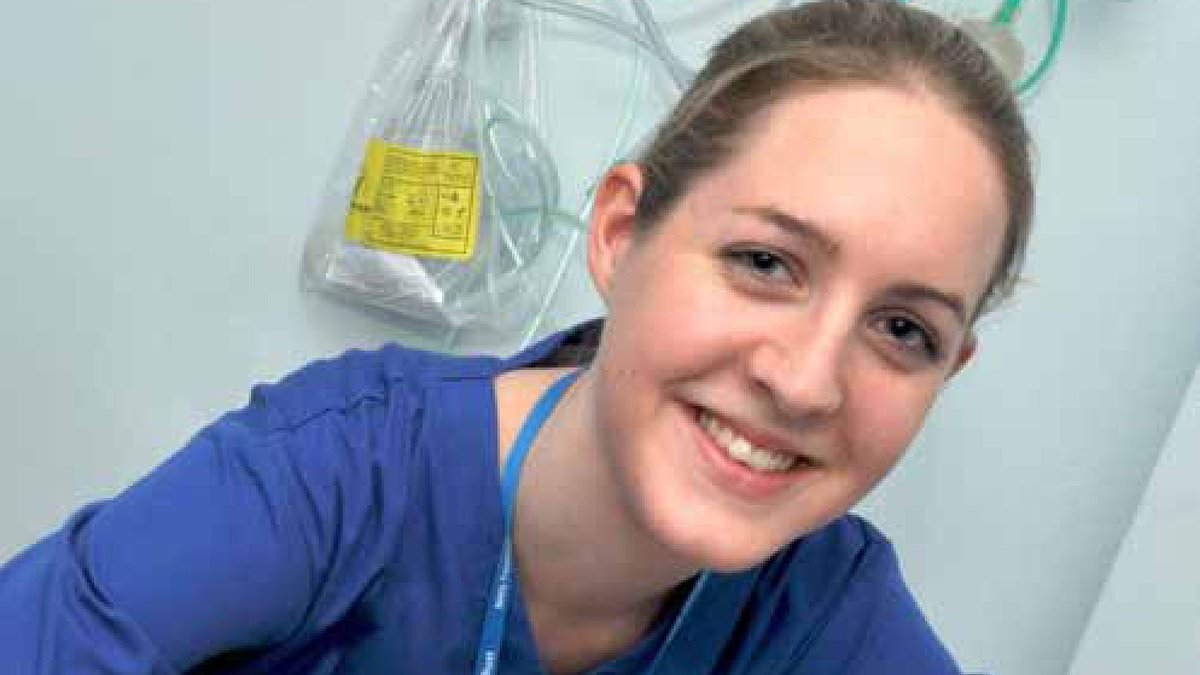A new audit of baby deaths at Lucy Letby’s hospital has found that many of the most rapid deteriorations took place when she was not on duty, The Mail on Sunday can reveal.
The mortality data, which has been compiled from multiple sources, including Freedom of Information requests, is understood to show a broader spike in deaths during the period focused on by the police investigation – bolstering Letby’s argument that the fatalities were caused by wider failures of care at the Countess of Chester Hospital.
A new legal team, led by Mark McDonald KC, has been instructed to take Letby’s case to the Criminal Cases Review Commission, which investigates potential miscarriages of justice and can refer cases back to the Court of Appeal for consideration.
Letby is serving 15 whole-life orders after being found guilty of murdering seven babies and attempting to end the lives of seven more between 2015 and 2016. But several respected experts have come forward to express their concern about the reliability of the evidence.
Mr McDonald, who says the case could be the ‘biggest miscarriage of justice in the history of the United Kingdom’, is also focusing on the role of Dr Dewi Evans, the chief prosecution witness, whose evidence was pivotal to Letby’s conviction.
Last month, following a Radio 4 investigation, Dr Evans changed his mind about how Ms Letby is said to have killed one of her victims, after it emerged that the nurse was not even at the hospital where the baby died at the time an apparently damning X-ray was taken.
Last week The Mail on Sunday revealed that a judge in a previous case had dismissed Dr Evans’s evidence as ‘worthless’.
And further questions have been raised about Dr Evans after an expert cited by him in the trial disputed Evans’s interpretation of his work.
Dr Evans had referenced a 1989 academic paper by Dr Shoo Lee on air embolism in the bloodstream in babies – a central part of the prosecution’s case that Letby had killed by injecting them with air. The paper described skin discolouration that indicated air embolism in babies caused by high-pressure ventilation – not at normal pressure, as Letby is said to have done.
Dr Lee, who retired recently from a career as one of Canada’s top neonatologists, was not called by Letby’s original defence team at the trial but told Letby’s appeal that none of the descriptions of the babies’ skin discolourations matched the kind that characterised air embolism.
He said that none of the babies in the trial should have been diagnosed with air embolism because it was ‘a very rare and specific condition and should not be diagnosed by excluding other causes of death or collapse and concluding that it must be a case of air embolus because nothing else could be found’.
However, the appeal court judges said his evidence was not admissable because her defence did not call him in the trial.
‘No good reason has been shown why the applicant should now be allowed to adduce evidence which could have been obtained and adduced at the appropriate time,’ they said.
A total of 24 experts in statistics, forensic science and neonatology have written to the Government pointing out a series of worrying anomalies in the case, including the fact that a number of baby deaths on the unit when Letby was not present had been excluded from the prosecution’s analysis – something her new defence team will seek to remedy with the mortality data.
Dr Evans claims that questions over the convictions had arisen because the case was ‘such a shocking thing to come to terms with, and of course one of the ways of dealing with shocking news is to go into denial’.
